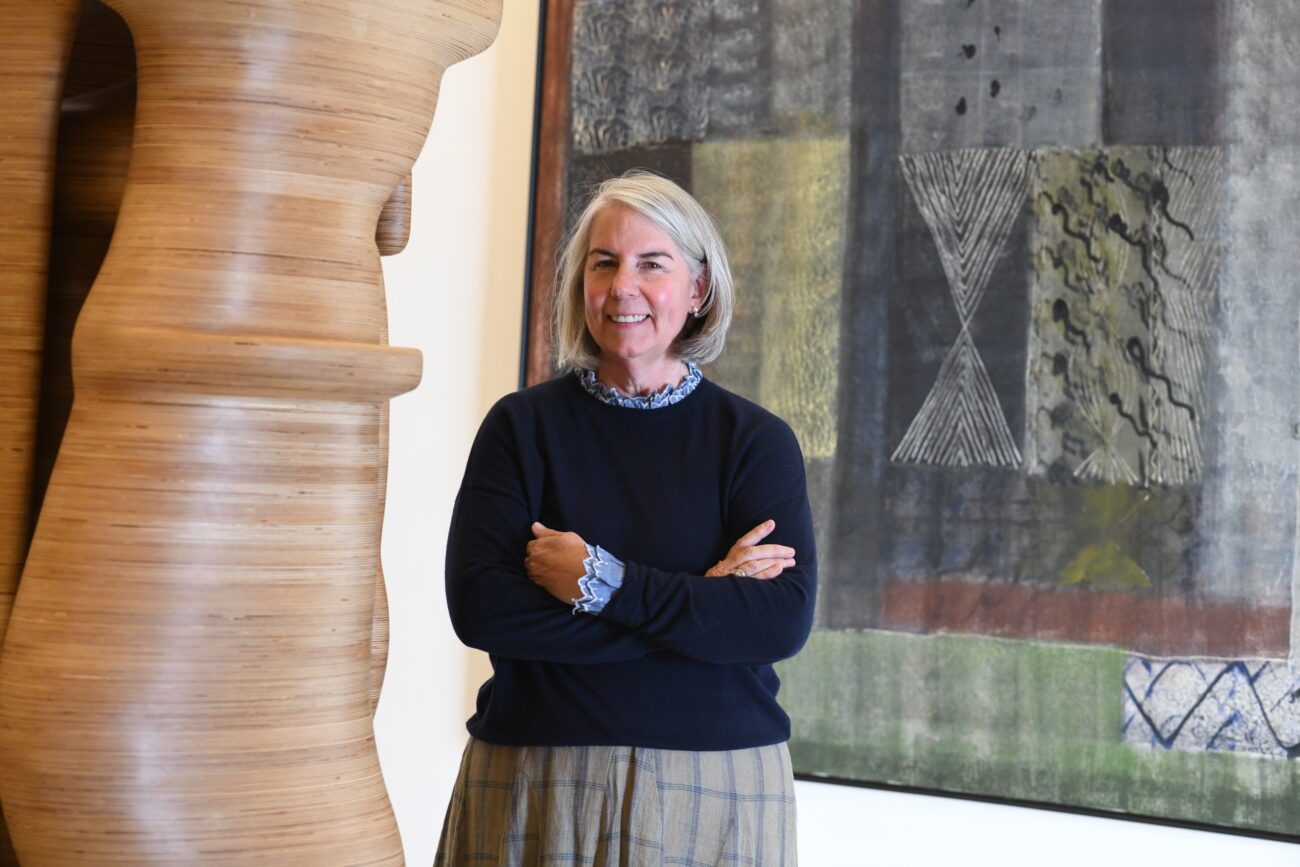Since its founding in 2007, Tia Collection has acquired works created by women artists from around the world to focus attention on their diverse perspectives and share the works with museums around the world. As a precursor to our upcoming February 2024 exhibition at Chatter North in the Muñoz-Waxman Gallery, Santa Fe, curated by members of the Tia Collection staff, I wanted to highlight the diversity of the voices from around the globe in our collection.
Some of the earliest acquired works by women artists were for the historic Western American collection, including those by Dorothy Brett, a British-American woman born into an aristocratic family. She moved to Taos, New Mexico in 1924 and set a pioneering example in the high desert locale. Her vibrant dance scene in Women’s Dance is a classic work depicting members of the Taos Pueblo, with a glimpse of the pueblo in the distance.
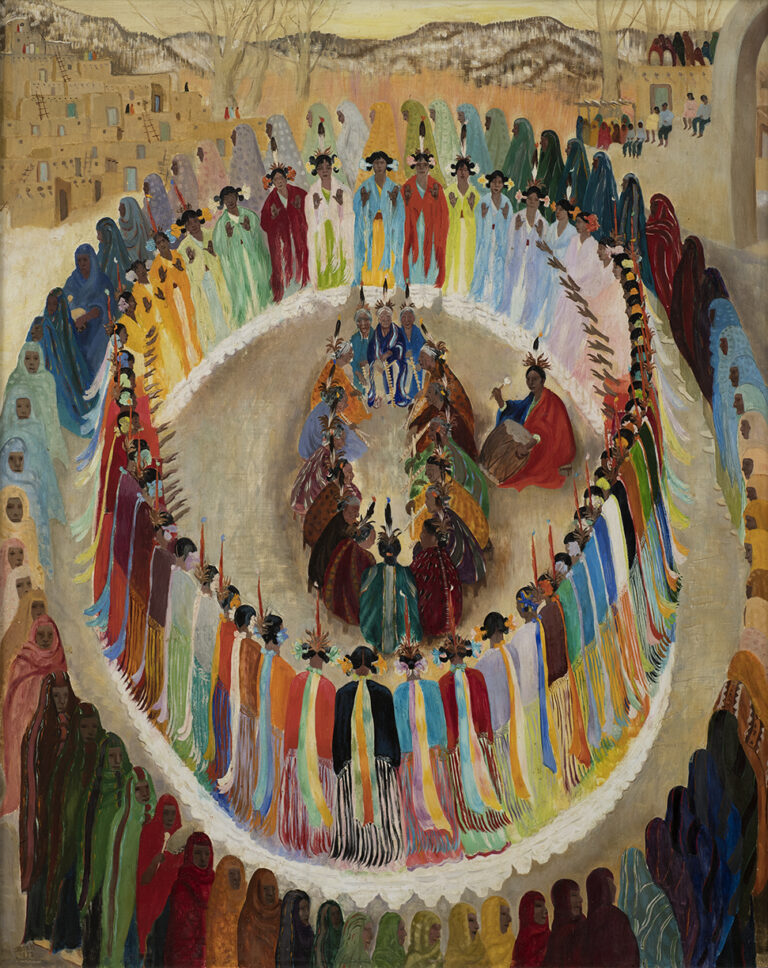
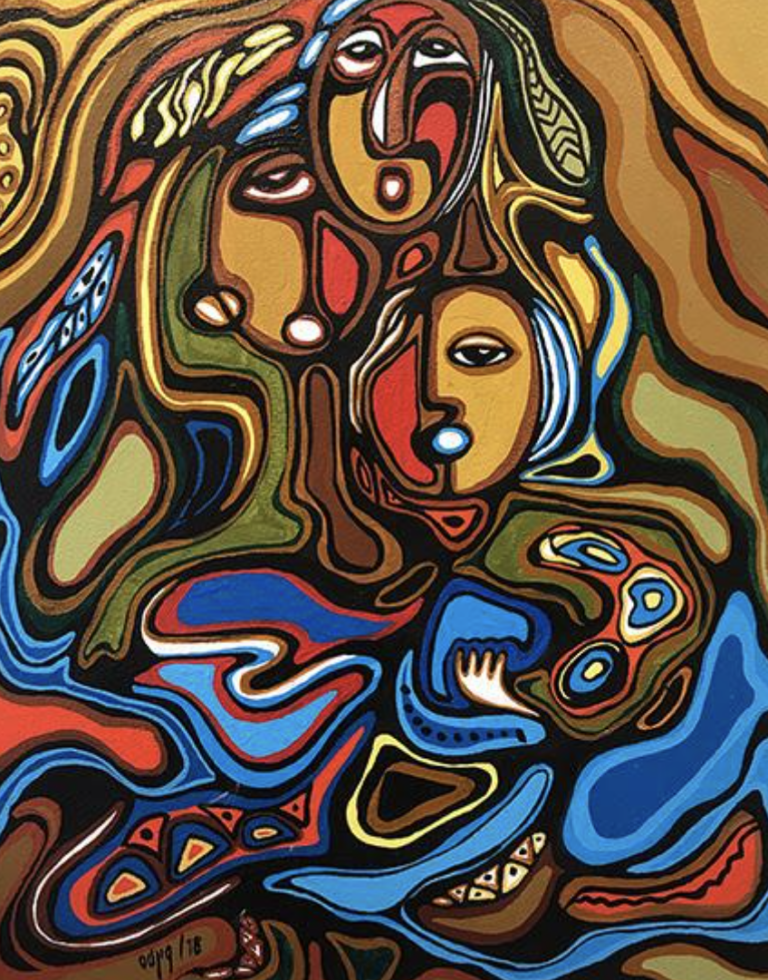
Indigenous artists also have been an important voice that has shaped the collection from the beginning. Daphne Odjig was a Canadian First Nations (Odawa, Potawatomi and English) artist whose distinct painting style and bold use of color depict narratives from legend, colonial history and everyday family life, while Raven Halfmoon (Caddo) pushes the boundaries of her chosen medium, clay, to create monumental stoneware figurative works.
I create work that is large and powerful. I build sculptures that demand to be heard and experienced. My artwork exists to break the mold of the romanticized Native American stereotype and to simply say: We are still here and we are powerful. —Raven Halfmoon
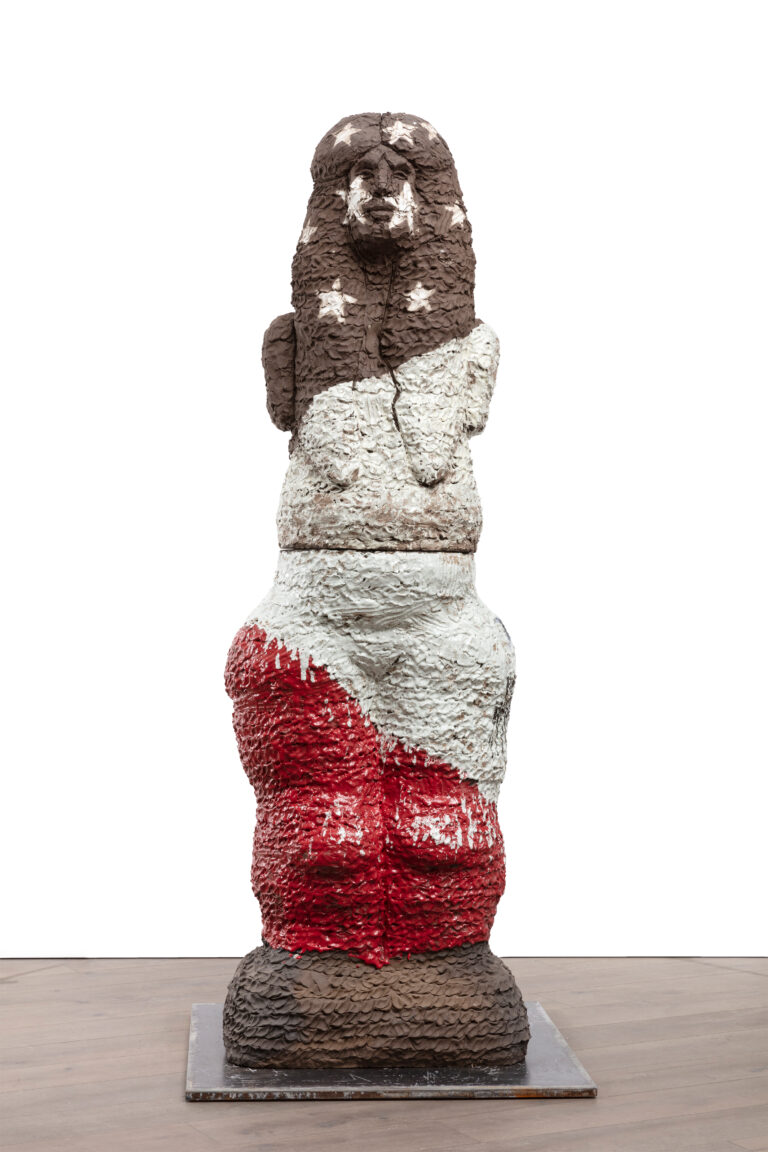
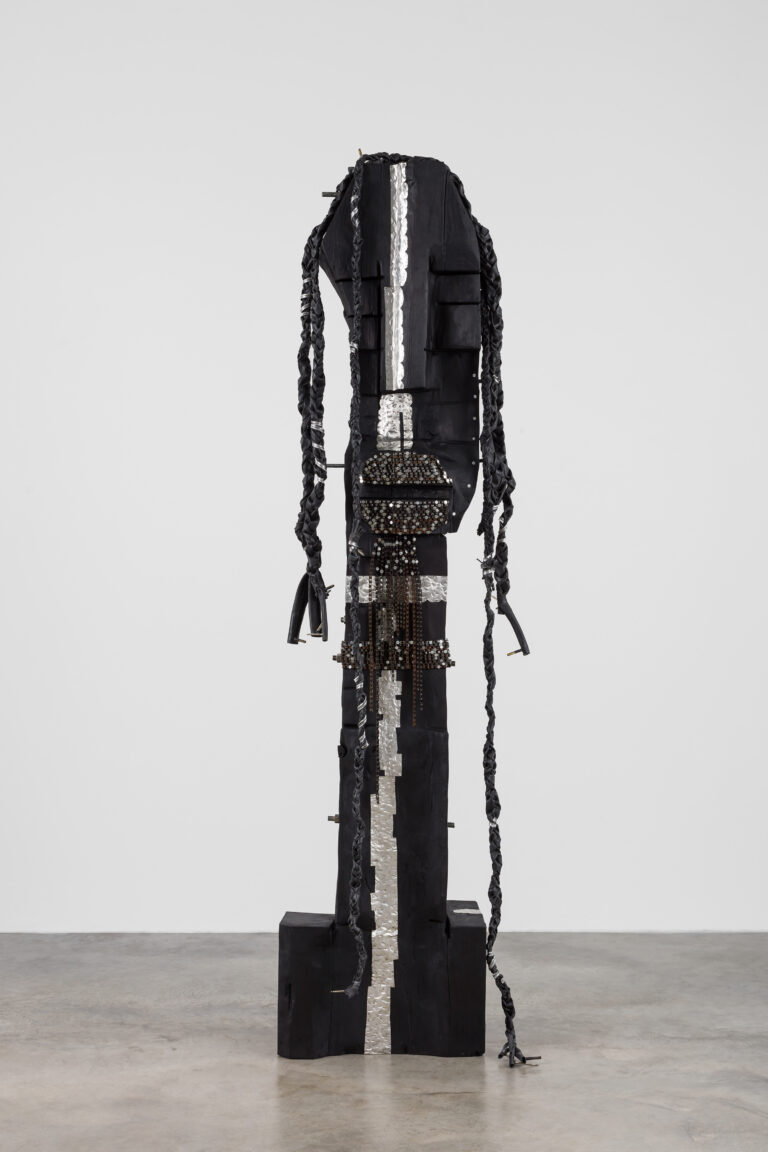
Leilah Babirye, a multi-disciplinary sculptor and painter, fled to New York from Uganda after being outed as a lesbian in her country’s press, due to strict anti-homosexuality laws. She transforms found materials into embellishments for her ceramic and wooden sculptures that consider themes of identity, sexuality, personal history and resilience.
Within the last two years, the collection has also made a concerted effort to include Indigenous tribal perspectives from rural India. Two artists, Jodhaiya Bai Baiga (a member of the Baiga tribal community in Central India) and Kamta Tahed (a member of the Bhil community in Central and Western India) are Adavasi artists. Baiga artists believe in living in harmony with nature and are inspired by the flora and fauna of their home, while the Bhil employ a series of complex dots as patterning in their art, inspired by corn—one of their major crops.
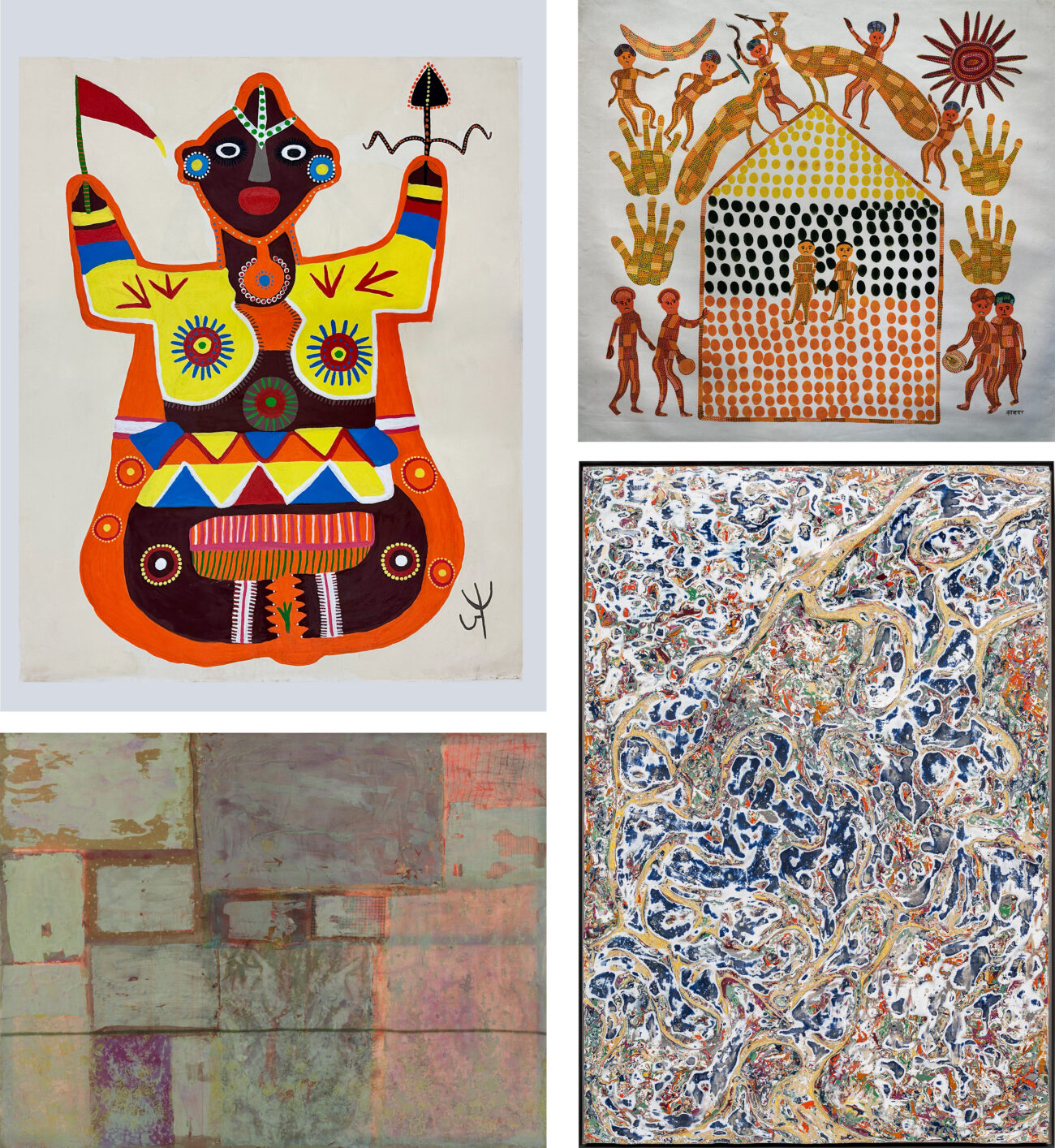
South Korean artist Lee Bul challenges the binary categories of the organic and the artificial through material and form, combining organic mother-of-pearl, lacquer and wood with synthetic acrylic paint. Similarly, French artist Mimosa Echard approaches her painting with inspiration taken from her garden, and questions the relationship between nature and the production of mainstream merchandise.
I had this idea that to survive the oppressive censorship of ideology, artistic expression would be the only way out for me. The moment I decided to reject accepted conventions and definitions I was free to question everything.
—Lee Bul

